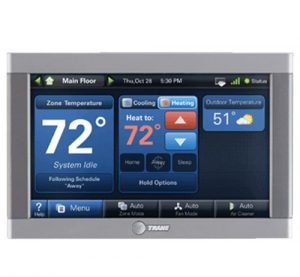For many years, both residential and commercial buildings have used traditional air conditioning units to cool inside during warm summer days. While technology has certainly advanced, the main concept and ideas behind these units has remained fairly consistent. Recently, however, a bit of a new trend has emerged when it comes to cooling inside a building. It’s one that returns to the most basic of cold ideas – ice.
Some very large businesses are actually seeing cost savings through efficiency and less chemical usage by implementing and using ice based air conditioning for their office buildings. In fact, an estimated 3,000 buildings around the world are now using this type of cooling technology.
So how does it work? These types of systems work by making ice at night, when lower power usage means energy is cheaper and lower temperatures mean less power is required to freeze water. During the day when most people return to the office, fans blow air through the ice and into the building. Traditional air conditioning units are most used during the day when more activity is going on in the office, thus requiring more cool air. By saving most of the energy requirements for the nighttime during cooler temperatures, these systems are proving to be very efficient.
Major corporations who have installed these ice cooling units are getting major kudos for their environmental benefits. They are also saving, in some cases, millions of dollars per year in energy bills. The system essentially works like an ultra-efficient battery, storing energy in the form of ice that provides cheap cooling for a large area.
These ice cooling systems also tend to last much longer and require less repair and maintenance than traditional air conditioning units. Because of these benefits and others, many companies are considering installing these types of cooling systems. They don’t come cheap, however. Large-scale ice cooling systems can cost up to $3 million to install.
Many states and even the federal government are implementing special tax breaks for these types of environmentally friendly building upgrades in order to help make the cost more manageable and encourage these types of investments. We’d be willing to bet these systems may become even more popular in the near future, and perhaps even make their way into the homes of consumers as technologies evolve and costs go down.







